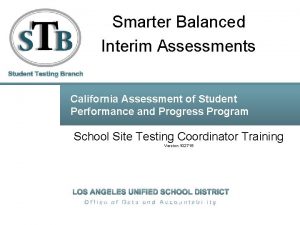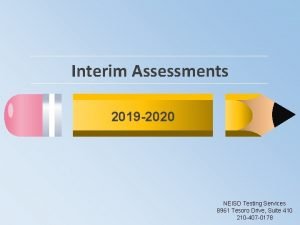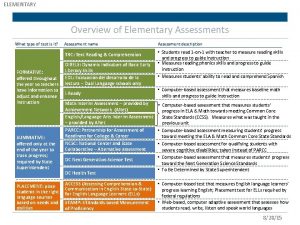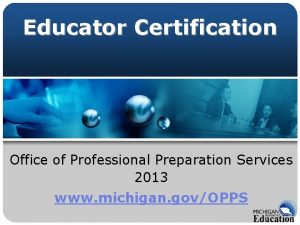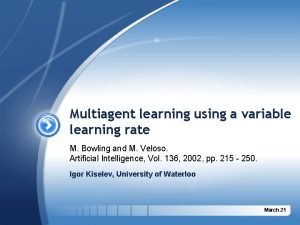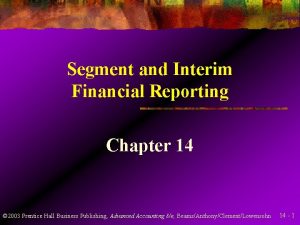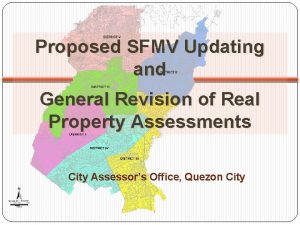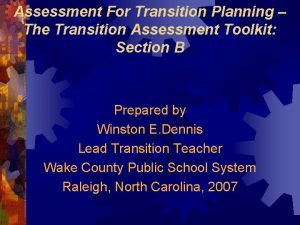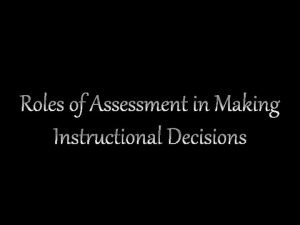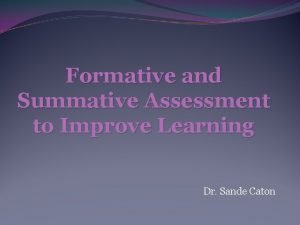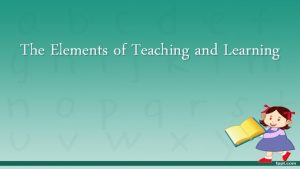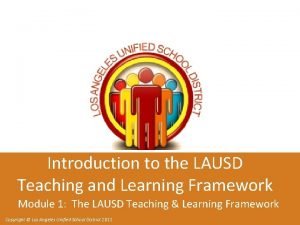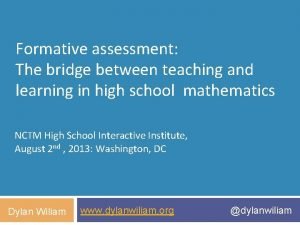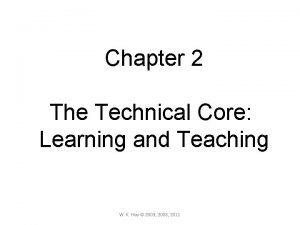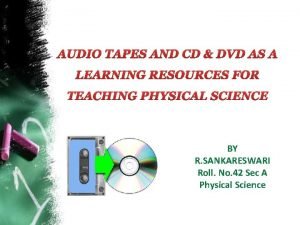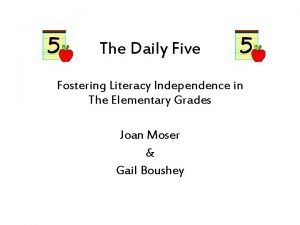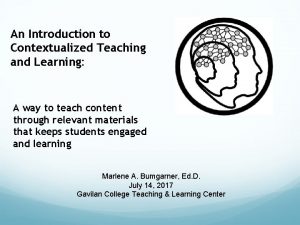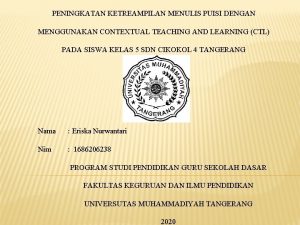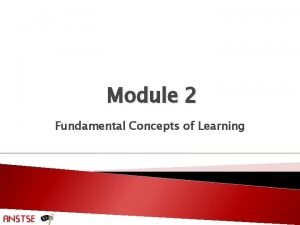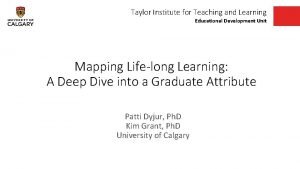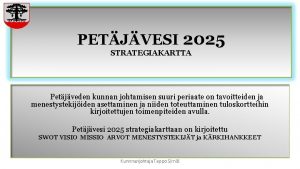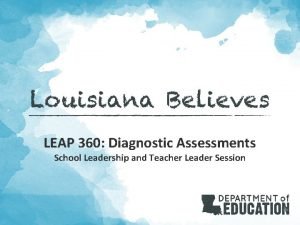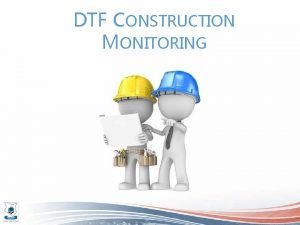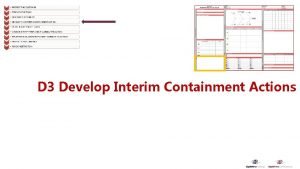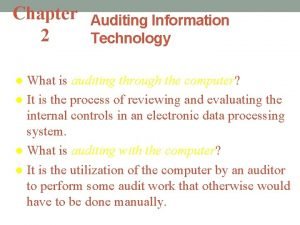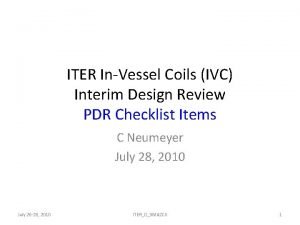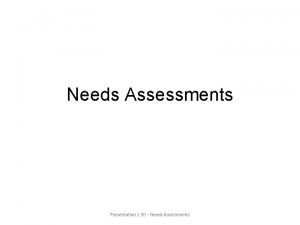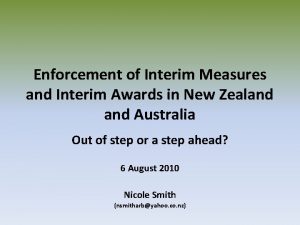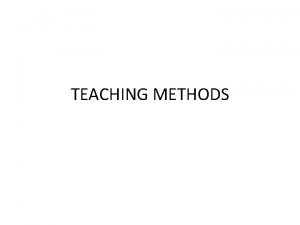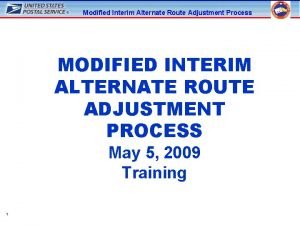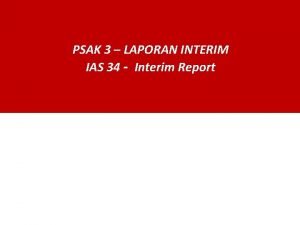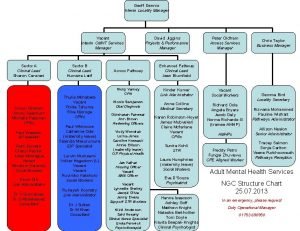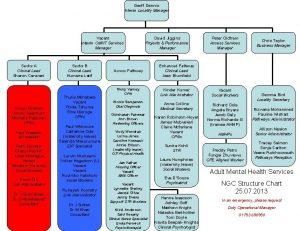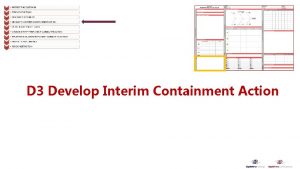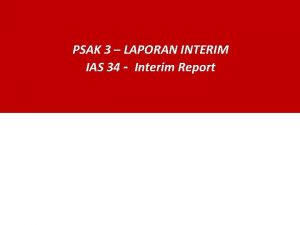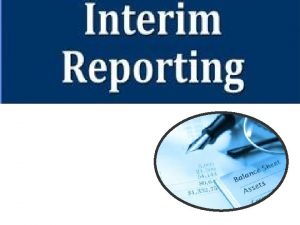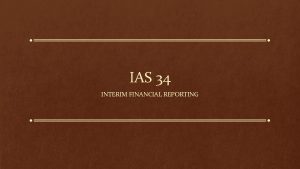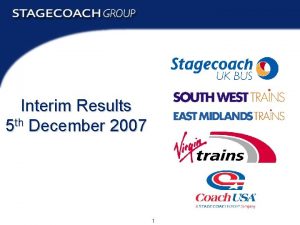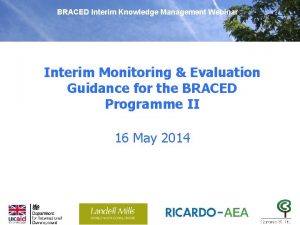Using Interim Assessments to Support Teaching and Learning
















































- Slides: 48

Using Interim Assessments to Support Teaching and Learning Throughout the Year TOM TORLAKSON State Superintendent of Public Instruction

Learning Goals Participants will understand • the features and different uses of the two different types of interim assessments; • how nonstandardized uses of the interim assessments and related resources are a powerful tool in supporting improved teaching and learning; and • how to support teachers in professional learning through the use of the Interim Assessment Viewing System and the Hand Scoring Training Guides and Exemplars. California Department of Education 2

Success Criteria Participants can • identify multiple uses of ICAs and IABs; • explain how different uses of the interim assessments can enhance student and teacher learning; and • provide information and training to others on the Interim Assessment Viewing System and the Hand Scoring System and associated resources. California Department of Education 3

Assessment FOR Learning “Assessment has two fundamental purposes: One is to provide information about student learning minute-by-minute, day-to-day, and week-to-week so teachers can continuously adapt instruction to meet students’ specific needs and secure progress. This type of assessment is intended to assist learning and is often referred to as formative assessment or assessment for learning. ” California Department of Education (2014) English Language Arts/English Language Development Framework for California Public Schools: Kindergarten Through Grade Twelve California Department of Education 4

Assessment OF Learning “A second purpose of assessment is to provide information on students’ current levels of achievement after a period of learning has occurred. Such assessments—which may be classroom-based, districtwide, or statewide— serve a summative purpose and are sometimes referred to as assessments of learning. ” California Department of Education (2014) English Language Arts/English Language Development Framework for California Public Schools: Kindergarten Through Grade Twelve California Department of Education 5

Setting the Stage How are the Smarter Balanced Interim Assessments currently being used in your local educational agency (LEA)? California Department of Education 6

Overview of Interim Assessments and Key Resources California Department of Education 7

Types of Interim Assessments Interim Comprehensive Assessment (ICAs) • 1 per grade level • Results include overall score and claim level information • Include hand scoring (local responsibility) Interim Assessment Blocks (IABs) • 6 -9 per grade level, for grades 3 -8 and HS • Results are at the overall block level; no claim information • Some include hand scoring (local responsibility) California Department of Education 8

Features of Interim Assessments • Flexible administration • Full array of accessibility supports • Aligned with the Common Core State Standards • Out-of-grade level use • Administered online • May be administered more than once California Department of Education 9

Resources to Support the Use of Interim Assessments • Interim Assessment Viewing System • Hand Scoring Training Guides and Exemplars • Hand Scoring System http: //www. caaspp. org California Department of Education 10

Resources to Support the Use of Interim Assessments (cont. ) CDE Smarter Balanced Interim Assessments Web page http: //www. cde. ca. gov/ta/tg/sa/sbacinterimassess. asp • Information available on: • Available ICAs and IABs and test blueprints • Items requiring hand scoring California Department of Education 11

Administration Options for the Interim Assessments California Department of Education 12

Manner of Administration for Interim Assessments • Standardized • Nonstandardized (system default) California Department of Education 13

Common Features of Standardized Administration of the Interim Assessments • Administered to students individually • Typically follows procedures for administration used on summative assessments • It may require hand scoring • Student performance levels are generated • Assessment of learning California Department of Education 14

Common Features of Nonstandardized Administration of the Interim Assessments • Administration can vary. • Individual, partners or small groups, or wholeclass administration. • Teachers may elect to include some discussion time between test items. • Hand scoring may be completed as needed. • Student scores are not usually generated. • Assessment for learning. California Department of Education 15

Interim Assessment Manner of Administration Settings • Nonstandardized administration is the default. • Standardized/Benchmark administration should be selected only if the assessment will be administered in a standardized manner similar to the summative assessment. Selecting a manner of administration allows educators to know how the assessment was administered and if there can be a valid interpretation of results for students. California Department of Education 16

Changing the Manner of Administration California Department of Education 17

Changing the Manner of Administration California Department of Education 18

System Indicator of Manner of Administration California Department of Education 19

Standardized Uses of the Smarter Balanced Interim Assessments California Department of Education 20

Standardized Uses for the Interim Assessments • Diagnostic • Pre-Assessment • Benchmark • Common Assessment Grade 4 Unit 1 2 3 4 5 6 7 8 Focus Place Value and Multidigit Addition and Subtraction Multiplication with Whole Numbers Division with Whole Numbers Equations and Word Problems Measurement Fraction Concepts and Operations Fractions and Decimals Geometry California Department of Education Interim Assessment Numbers and Operations in Base 10 Operations and Algebraic Thinking Measurement and Data Number and Operations – Fractions Measurement and Data/Geometry 21

Example of Standardized Use of the ICAs 6 th Grade MATH STUDENT/CLASS PROFILE Grade: Student Name Math CAASPP Level Score T 1 Math Interim Lev Score T 2 ALEKS Lev Score T 1 Add T 2 T 3 T 1 SY: Teacher: Sub T 2 T 3 T 1 California Department of Education Muliplication T 2 T 3 T 1 T 2 Division T 3 T 1 T 2 Comments T 3 22

Standardized Use of the IABs: Anaheim Elementary School District • Three IABs in ELA and math • Grades 3 -6 • 24 elementary schools http: //www. cde. ca. gov/ta/tg/ca/documents/ciaanaheim 092016. pdf California Department of Education 23

Digital Library Resource Collections Instructional Learning Series Digital Library Connections Both resources can be found on the CDE Web site at http: //www. cde. ca. gov/ta/tg/sa/collectionresources. asp California Department of Education 24

How could standardized administration of the ICAs or IABs support teaching and learning in your LEA? How could the Smarter Balanced Interim Assessments support other assessments currently administered in your LEA? California Department of Education 25

Nonstandardized Uses of the Smarter Balanced Interim Assessments California Department of Education 26

Benefits of Nonstandardized Uses of the Interim Assessments • Inform the formative assessment process and improve student learning • Assessment for learning California Department of Education 27

Benefits of Nonstandardized Uses of the Interim Assessments (cont. ) • Build teacher content knowledge and assessment literacy • Familiarize students with the types of test items. • Allow teachers opportunities to observe and engage with students about assessment items. California Department of Education 28

Interim Assessment Viewing System http: //www. caaspp. org/ta-resources/interim. html California Department of Education 29

Use of the Interim Assessment Viewing System Supports teachers in • Understanding the content and scope of an interim assessment; • Understanding the depth of knowledge of the assessment items; and • Making informed decisions about the selection and assignment of accessibility supports for students. California Department of Education 30

Use of the Interim Assessment Viewing System (cont. ) Supports student learning by • Becoming familiar with test questions and how to tease apart what the question is asking the student to do; and • Discussing the demands and response requirements of the items. California Department of Education 31

Review an Item • • What is the question asking students to do? What content/standards are being assessed? How is the item being assessed? What Depth of Knowledge is being assessed? California Department of Education 32

Example of How an LEA Might Use the Interim Assessment Viewing System • Professional learning: • Teachers have reviewed IABs before teaching related units with the intent of identifying appropriate item types and vocabulary to support related classroom activities. • In the classroom: • As a “warm up” activity with students. Teachers display items on the white board and ask student to work with a partners to come up with an answer. This is followed with a class discussion. California Department of Education 33

How do you use this tool? How can you suggest this tool be used in a classroom? California Department of Education 34

Hand Scoring Training Guides and Exemplars California Department of Education 35

Hand Scoring Training Guides and Exemplars (cont. ) Guides and exemplars support teachers in: • Understanding the requirements of the hand scoring process, including the time needed; • Accessing scoring rubrics and student exemplars that demonstrate possible student responses in order to better plan instruction; and • Engage in collaboration and communication around common assessment items grounded in standards-based rubrics. California Department of Education 36

Hand Scoring Training Guides and Exemplars (cont. ) Support student learning by • demonstrating expectations of the common core standards; and • familiarizing students with the rubrics and scoring criteria. Brief-Write Rubric Target 6 a ● Opinion (Elaboration) Score Description 2 The response: develops adequate supporting reasons/details and/or evidence from the student notes. does more than list supporting reasons or details. adequately elaborates opinion/reasons using precise words/language. 1 The response: provides mostly general and/or limited supporting reasons/details and/or evidence which may be extraneous or loosely related. lists supporting reasons/details and/or evidence with limited elaboration. partially elaborates opinion/reasons using general words/language. 0 The response: provides minimal or no supporting reasons/details and/or evidence from the student notes. provides supporting reasons/details and/or evidence that may be unclear, repetitive, incorrect, contradictory to, or interfere with the meaning of the text. provides no appropriate elaboration and/or may use poor word choice for audience and purpose. California Department of Education 37

Example of Using the Training Guides and Exemplars In the classroom: • Teachers have asked students to review the rubrics and sample student answers with the goal of having students think and talk about the kind of response needed to score at each level. • After administering an IAB, teachers use the rubrics with students and ask them to think back to how they answered the question and what they would need to do differently to improve performance levels from 1 to 2, or 2 to 3. California Department of Education 38

How do you currently use these tools? How will you envision using these tools for professional development? How do you envision using these tools in the classroom? California Department of Education 39

Potential Nonstandardized Uses of the Interim Assessments in the Classroom • Students completing an assessment with partners or in collaborative groups • Students taking all or part of an assessment individually with a teacher • Administering only part of an assessment • Administering an out-of-grade assessment to target learning outcomes for specific level or group of students. California Department of Education 40

Nonstandardized Uses of the Interim Assessments: Brief Writes • Brief Writes is one of the IABs available. This IAB includes six items all of which require hand scoring. • Teacher asks all students individually to complete two of the items. • Teacher accesses the scoring rubrics via the Hand Scoring resources and scores some papers, but not all. California Department of Education 41

Teacher Observation Tools California Department of Education 42

Engage with Students • How students approached/solved assessment items • The types of items that were more challenging or presented issues for students California Department of Education 43

Keys in Promoting Use of the Interim Assessments • Encourage exploration • Focus on low-stakes environment • Start slow • Keep hand scoring minimal at first • Consider supplementing existing activities and/or assessments with the interim assessments • Allow teachers the freedom to choose California Department of Education 44

One District’s Experience During districtwide training as the idea of “assessment FOR learning” was discussed, the training team could literally see the stress drain out of people’s faces. This was a huge “ah-ha” moment for the district and a significant turning point in their work on CAASPP implementation --Sierra Sands Unified School District CAASPP in Action series http: //www. cde. ca. gov/ta/tg/ca/documents/ciasierrasands 08252016. pdf California Department of Education 45

CAASPP In Action: Sierra Sands Unified • Teachers were asked to select two IABs of their choosing by exploring them via the Interim Assessment Viewing System. • They did this by utilizing the existing protected collaboration time. • They engaged in collaborative conversations focused on what changes needed to take place in the classrooms to match the rigor of the assessments. California Department of Education 46

Implementation Planning California Department of Education 47

Thank You! California Department of Education 48
 Lausd interim assessments
Lausd interim assessments Interim assessment tea
Interim assessment tea Anet interim assessments
Anet interim assessments Michigan interim teaching certificate
Michigan interim teaching certificate Multiagent learning using a variable learning rate
Multiagent learning using a variable learning rate What is scaled down teaching
What is scaled down teaching What are the signal words
What are the signal words Cuadro comparativo e-learning m-learning b-learning
Cuadro comparativo e-learning m-learning b-learning Segment and interim reporting chapter 8
Segment and interim reporting chapter 8 Auditor definition
Auditor definition General revision of assessments and property classification
General revision of assessments and property classification Informal and formal assessment
Informal and formal assessment Formal reading assessment
Formal reading assessment Formative assessments
Formative assessments Physical activity and physical fitness assessments grade 9
Physical activity and physical fitness assessments grade 9 Example of formative assessment
Example of formative assessment Remedial teaching is employed to
Remedial teaching is employed to Appetitive faculties
Appetitive faculties New jersey center for teaching and learning
New jersey center for teaching and learning How many total squares are there
How many total squares are there Guiding principles for teaching and learning in mtb-mle
Guiding principles for teaching and learning in mtb-mle Teaching learning framework lausd
Teaching learning framework lausd Assessment the bridge between teaching and learning
Assessment the bridge between teaching and learning Technical core: teaching and learning
Technical core: teaching and learning Audio learning resources
Audio learning resources Ib approaches to teaching and learning ppt
Ib approaches to teaching and learning ppt New jersey center for teaching and learning
New jersey center for teaching and learning 10 steps to independence daily 5
10 steps to independence daily 5 Assure model instructional design
Assure model instructional design Contextualized teaching and learning
Contextualized teaching and learning Tilt assignment template
Tilt assignment template Nj center for teaching and learning
Nj center for teaching and learning Contextual teaching and learning
Contextual teaching and learning Learning preferences
Learning preferences Taylor institute for teaching and learning
Taylor institute for teaching and learning Mhp redstone army
Mhp redstone army Perakaunan untuk syarikat berhad menurut syer
Perakaunan untuk syarikat berhad menurut syer Interim-projektijohtaja
Interim-projektijohtaja Leap 360 algebra 1 interim test form 1 answer key
Leap 360 algebra 1 interim test form 1 answer key Leap 360 interim assessment
Leap 360 interim assessment Adams clasp indications
Adams clasp indications Interim certificate in construction
Interim certificate in construction Interim containment
Interim containment Interim audit
Interim audit Mary kelly interim
Mary kelly interim Interim beheerder riolering
Interim beheerder riolering Interim archives
Interim archives Interim design review
Interim design review Interim therapeutic restoration
Interim therapeutic restoration
